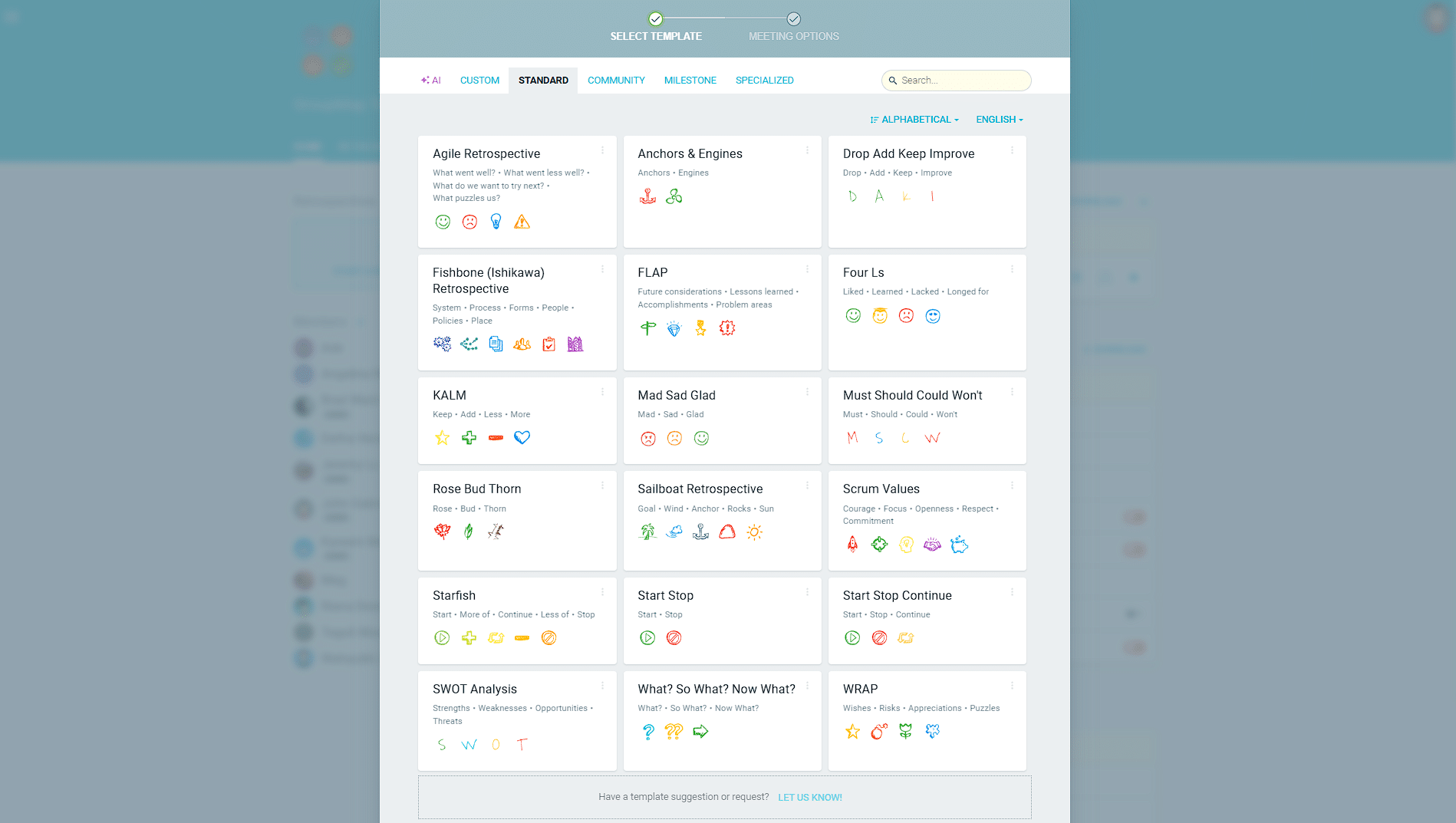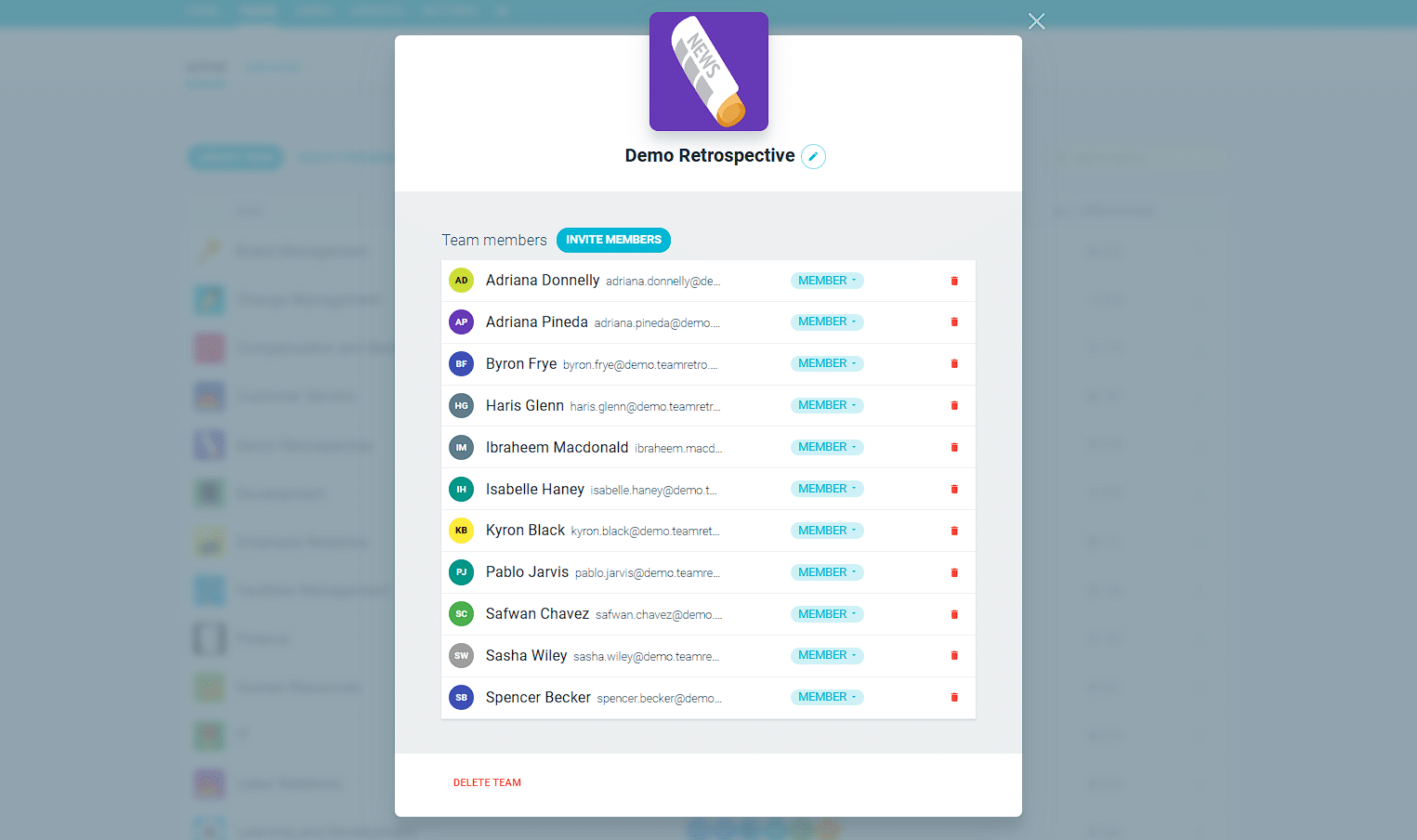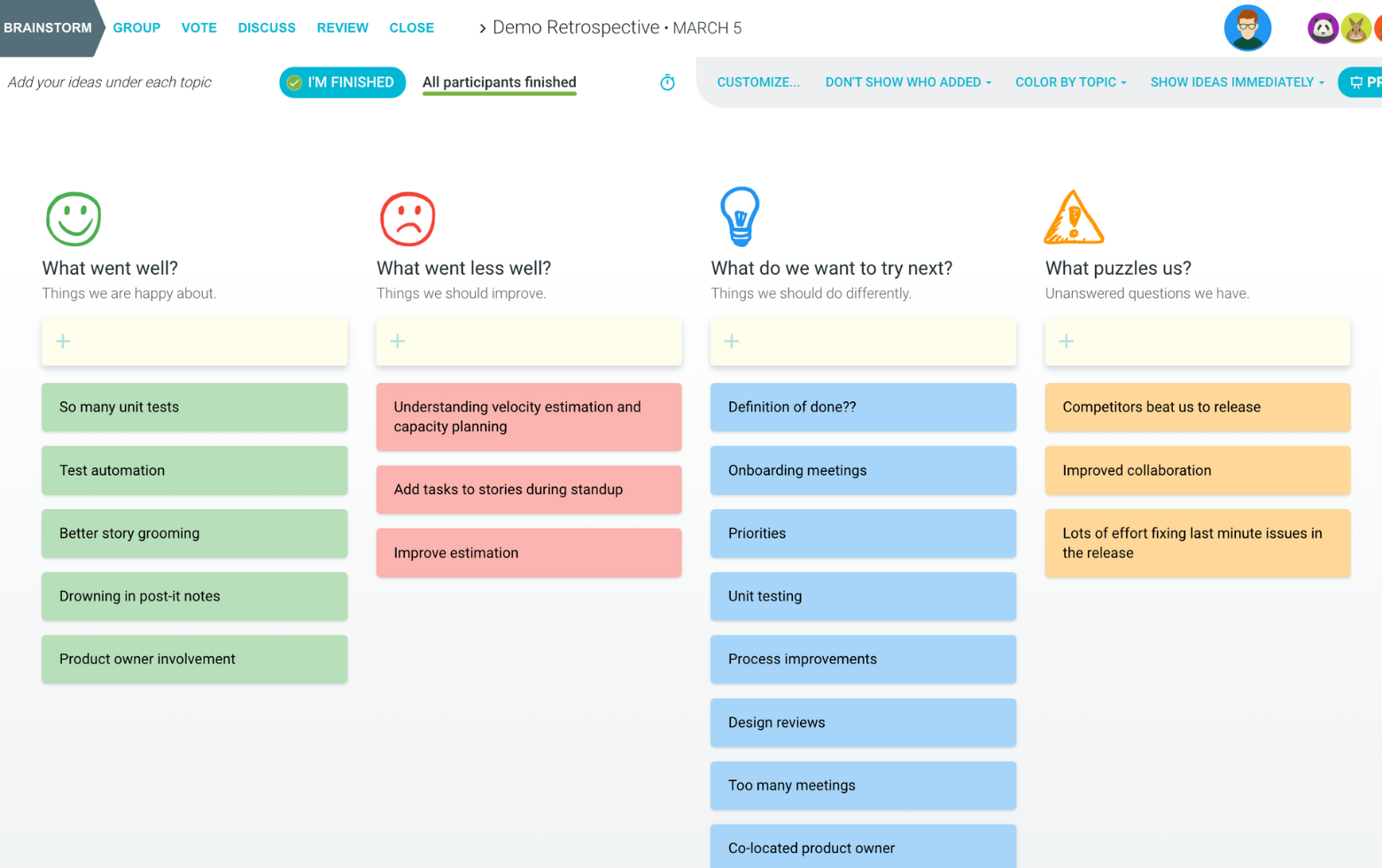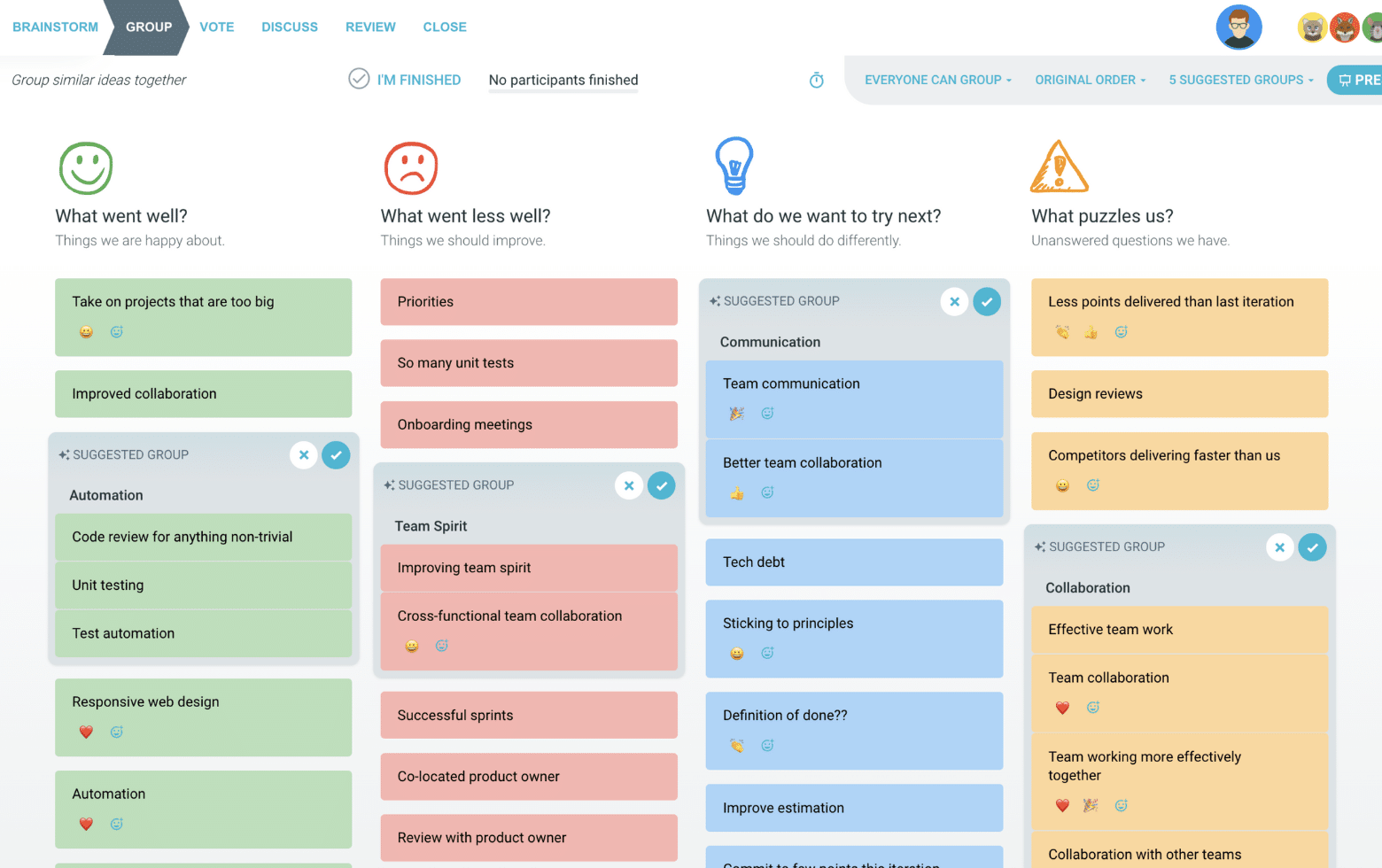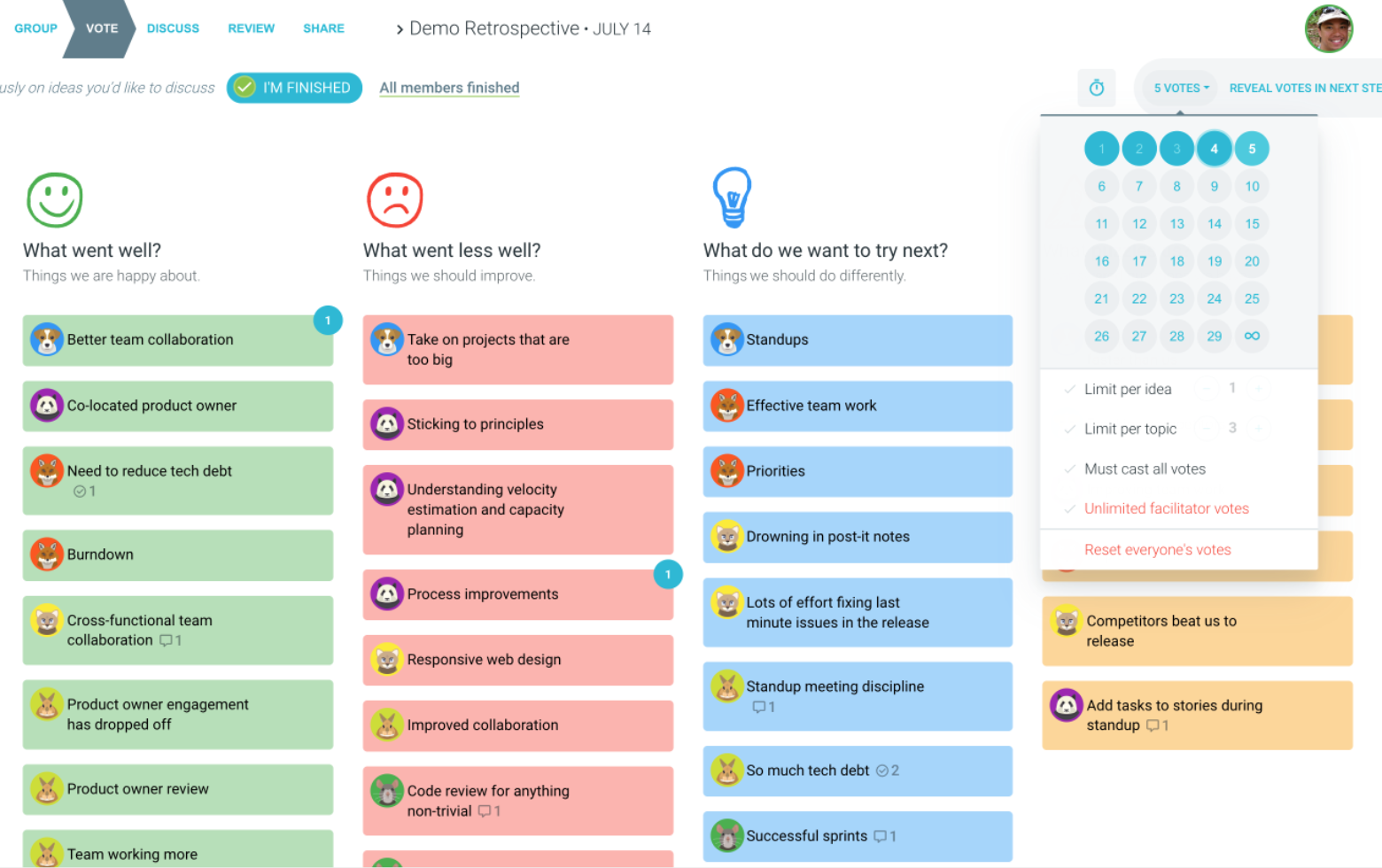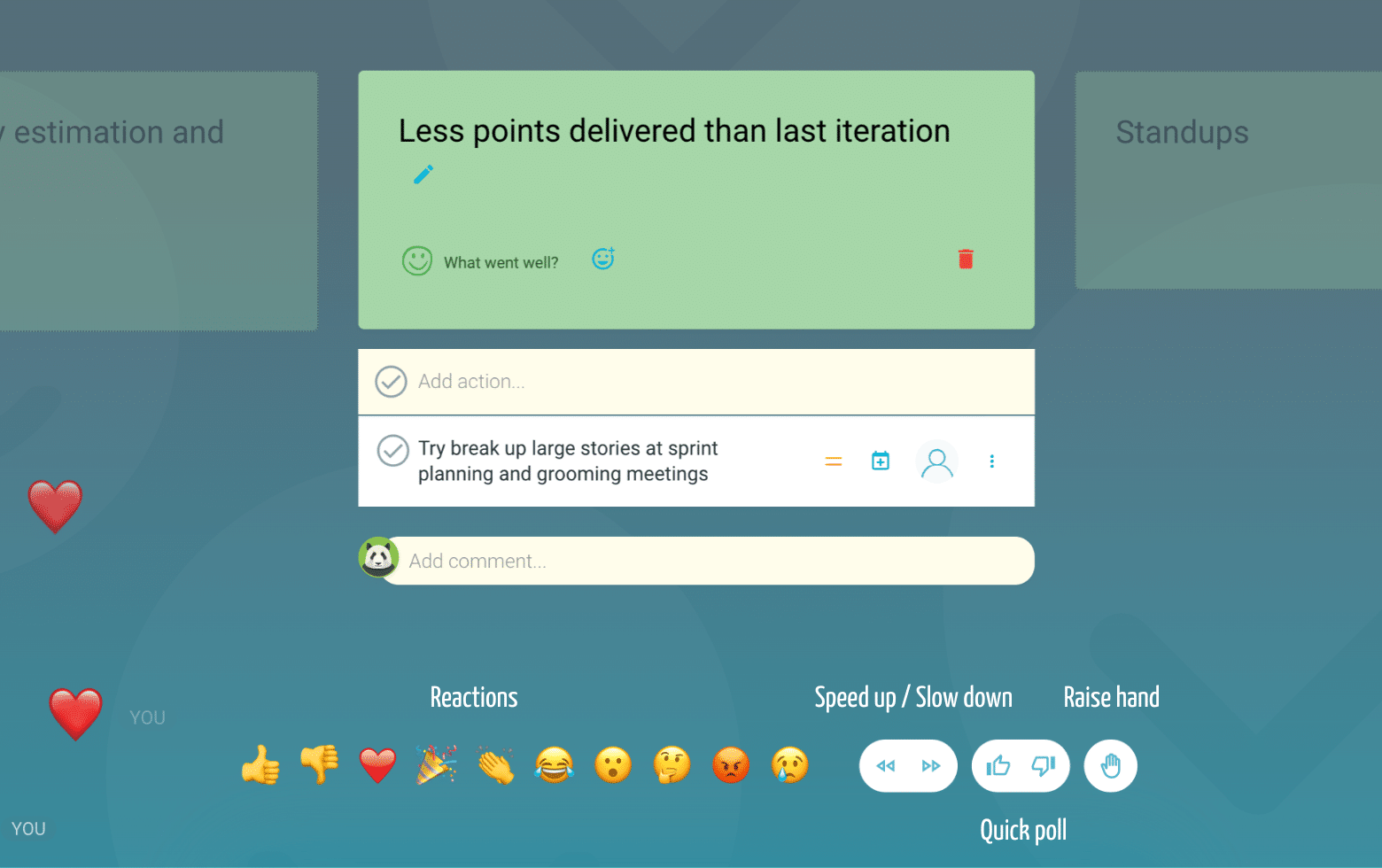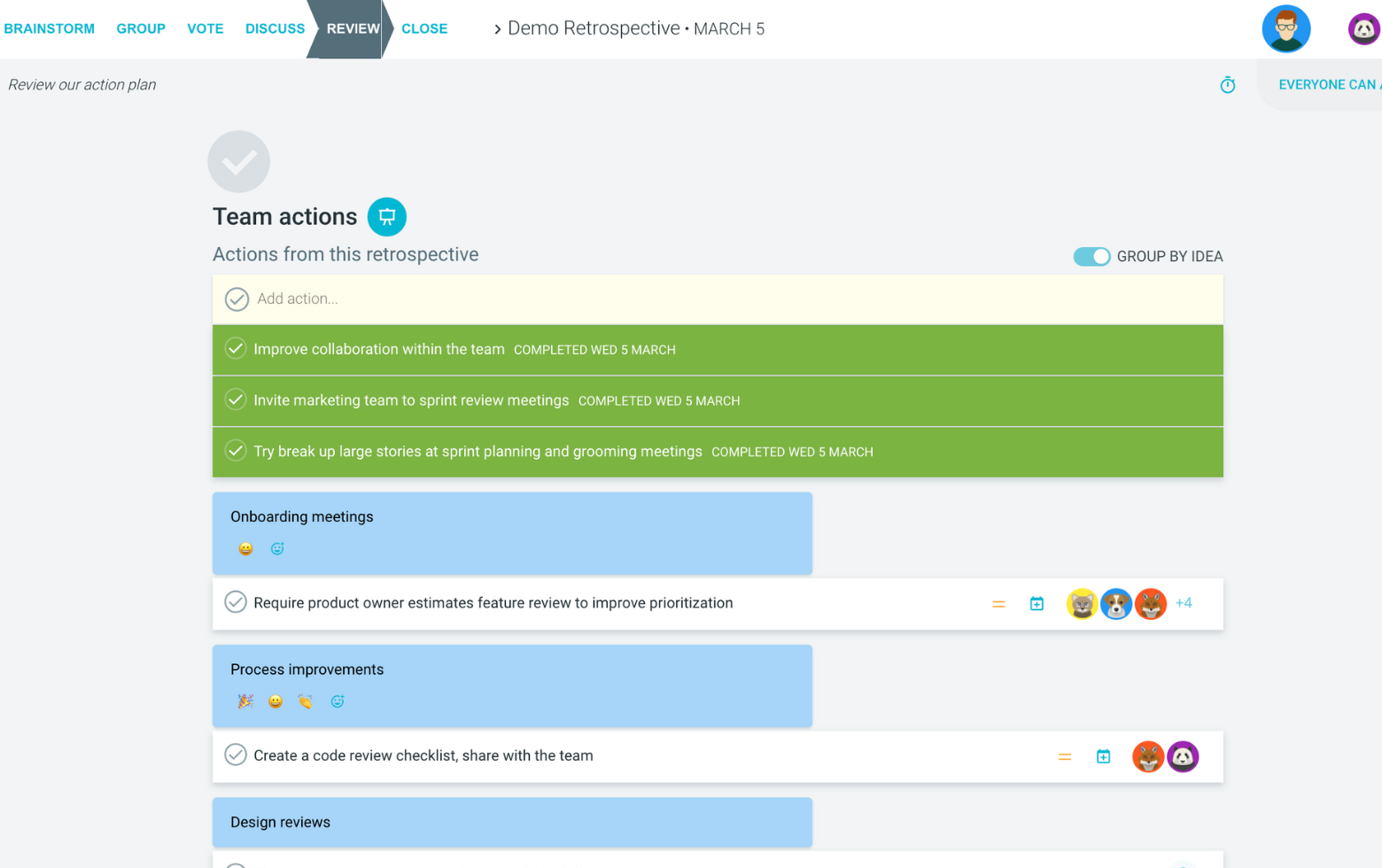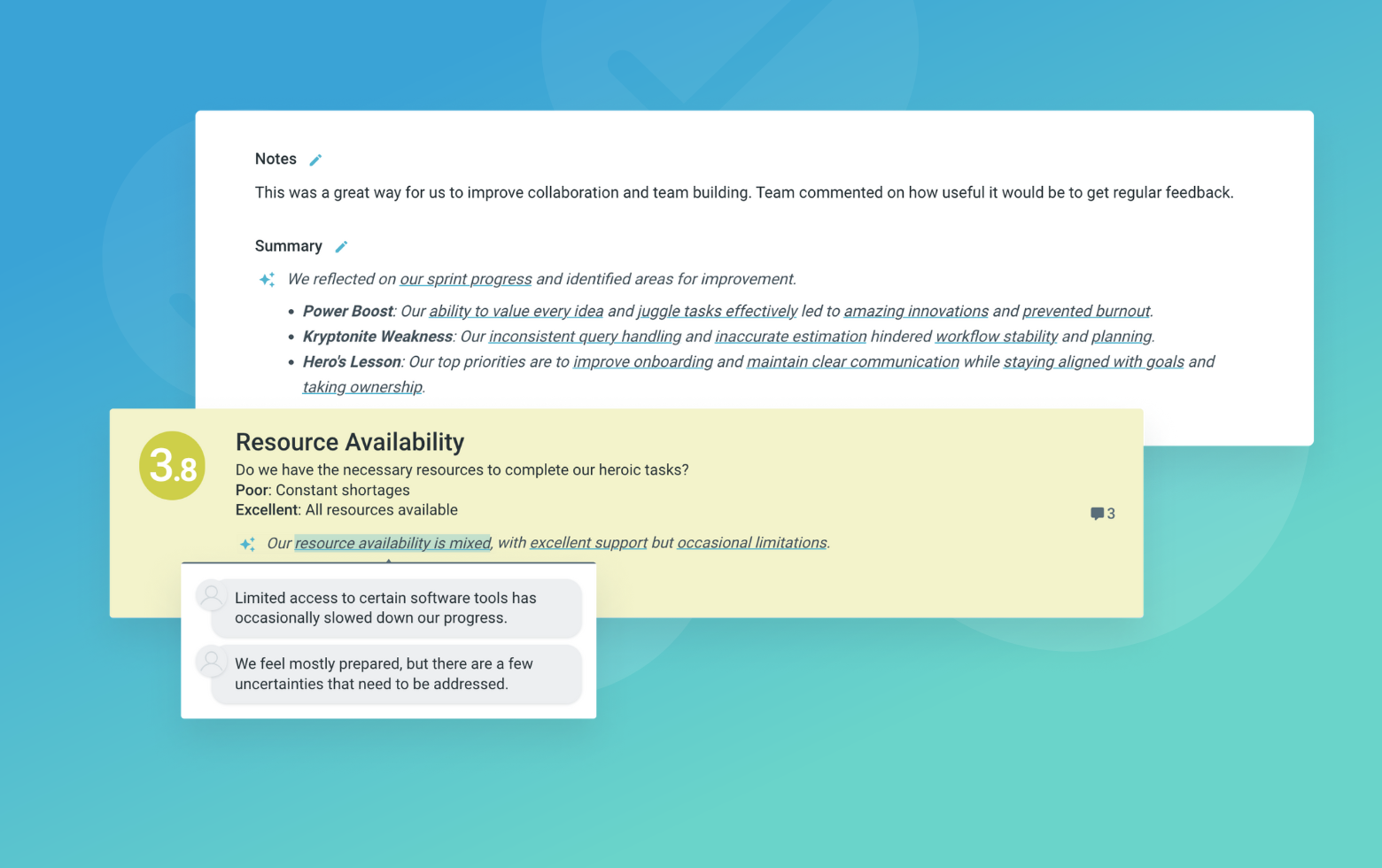The Operational Efficiency Review is a structured retrospective focused on analyzing business operations, processes, and costs to identify opportunities for optimization and increased efficiency. This review encourages cross-functional collaboration, data-driven decision making, and continuous improvement.
The retrospective begins by celebrating successes and recognizing efforts that led to operational gains. Teams then dive into areas requiring attention, brainstorming creative solutions and developing actionable plans. The goal is to streamline workflows, reduce redundancies, and implement cost-saving measures while maintaining or enhancing quality and customer satisfaction.
Regularly reviewing operational metrics keeps teams aligned on key performance indicators (KPIs) and ensures consistent progress toward strategic objectives. This retrospective can be tailored to various industries and organizational needs.
What is The Operational Efficiency Review
Operational Wins
What operational successes did we achieve this period?
Start the retrospective on a positive note by recognizing operational achievements and efficiency gains from the previous period. Celebrate team efforts that led to cost savings, process improvements, or enhanced customer experiences. Discuss factors that contributed to these successes and how to sustain or build upon them.
Areas for Improvement
What operational areas need attention or optimization?
Identify processes, workflows, or systems that are inefficient, costly, or causing bottlenecks. Encourage teams to provide data-driven insights and specific examples to support their observations. Prioritize areas with the highest potential impact on operational efficiency and cost savings.
Potential Solutions
What ideas do we have to address operational inefficiencies?
Encourage creative thinking and collaboration to generate potential solutions for the identified areas of improvement. Consider process redesigns, technology upgrades, policy changes, or organizational restructuring. Evaluate the feasibility, costs, and expected benefits of each proposed solution.
Action Plans
What specific steps should we take to improve operational efficiency?
Based on the proposed solutions, develop concrete action plans with assigned owners, timelines, and measurable goals. Prioritize initiatives with the highest potential impact and ensure alignment with organizational objectives. Identify any required resources, training, or support needed for successful implementation.
Suggested icebreaker questions
- If you could eliminate one operational inefficiency with a magic wand, what would it be and why?
- Share a personal experience where a process improvement made your life easier or more efficient.
Ideas and tips for your retrospective meeting
- Encourage data-driven discussions by providing relevant operational metrics and KPIs to inform decision-making.
- Foster a blame-free environment where teams can openly discuss challenges without fear of repercussions.
- Involve cross-functional teams and subject matter experts to gain diverse perspectives and ensure buy-in.
- Prioritize initiatives based on potential impact, feasibility, and alignment with strategic objectives.
- Establish clear ownership, timelines, and success criteria for action plans to ensure accountability.
- Celebrate quick wins and communicate progress regularly to maintain momentum and engagement.
.
How to run effective meetings with TeamRetro
Start Your Session in a Click
Log into TeamRetro and choose your template. Customise questions and the workflow to create your perfect retro for your team.
Create Your Team Easily – No Separate Accounts Needed
Brainstorm Individually – Free From Bias
Smart Grouping for Faster Insights
Fair, Flexible, and Fast Voting
Engage, React, and Capture Key Insights
Walk your team through ideas one by one with Presentation Mode. Stay in sync, spark real-time discussions, and capture feedback with comments, live reactions, and polls—all in one place.
Turn Ideas Into Action
Propose next steps with team buy-in, get AI-powered action suggestions, and keep everything in one place. Committed actions sync to your personal dashboard and integrate with your workflow tools—keeping you on track.
Save, Share, and Stay on Track
Get quick AI-powered summaries, add facilitator notes, and store retrospectives in your library for easy access. Schedule your next session and track published actions to keep your team accountable at the next retro.
Turn Team Data into Actionable Insights
Uncover trends, common themes, and key engagement metrics at a glance. Track sentiment shifts, analyze conversations, and monitor completed actions to drive continuous improvement.
